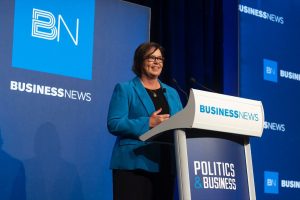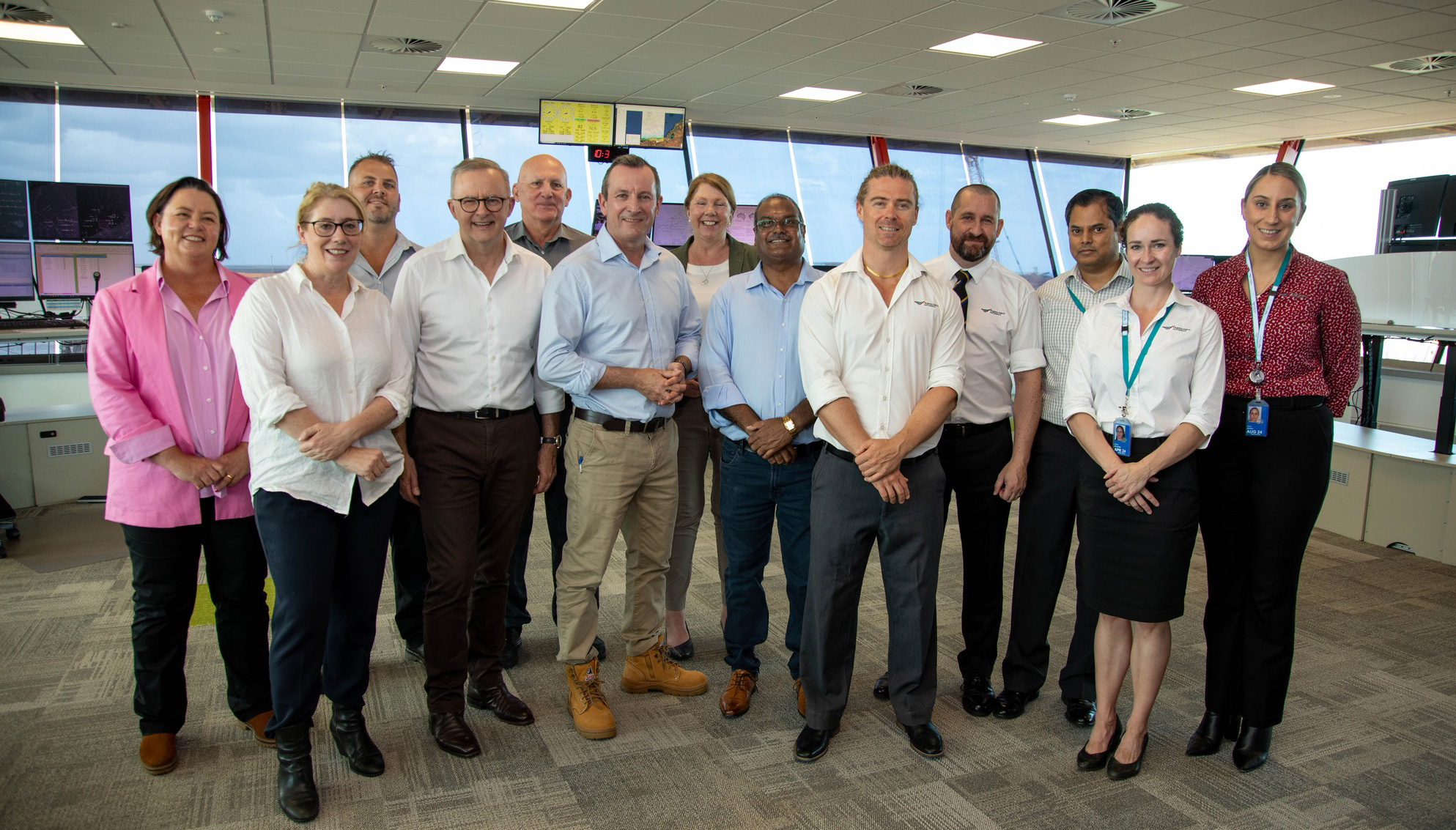“Important Cabinet ministers have seen the scale and they get it.”
This was how Federal Resources Minister Madeleine King, the WA Member for Brand, summed up the reaction of some of her colleagues after the historic visit to Port Hedland by Prime Minister Anthony Albanese and his Cabinet.
Speaking at a Business News Politics and Business event, Minister King said it was probably the first time some of her colleagues had seen the magnitude of the iron ore industry.
“I have been to Port Hedland many times, but I hadn’t been on a port tour, and it is eye opening – and I took the Trade Minister on that tour and the number of ships is astounding,” she said.
“And they all have to go out on and come in on the tide.
“I have said to colleagues for many years, you don’t get it until you see it. You’ve got to see it and see the scale.”
 In her keynote address and in a Question and Answer session, Minister King touched on the Government’s plan for a referendum on a Voice to Parliament, working with Indigenous owners, the critical minerals industry, and childcare in regional areas.
In her keynote address and in a Question and Answer session, Minister King touched on the Government’s plan for a referendum on a Voice to Parliament, working with Indigenous owners, the critical minerals industry, and childcare in regional areas.
“More than 60 per cent of national resources projects operate on land covered by a Native Title claim or determination,” Minister King said.
“It is essential that the resources sector works closely with First Nations peoples.
“By treating First Nations’ communities with respect and ensuring they gain maximum benefit from resources projects, the sector will in turn be supported by them.
“There is already a solid foundation to build on. More than a quarter of a million people work in the resources sector and First Nations people make up a greater share of this workforce than any other sector.
“This is statistic to be very proud of.”
The Voice
She said a number of resource companies had indicated their support to recognise Indigenous Australians in the Constitution through a Voice to Parliament.
“The Voice will ensure First Nations views are included during the development of the federal laws, policies and programs that impact their lives,” the Minister said.
“It recognises them as valued partners on matters relating to their interests.
“In this way, enshrining recognition of Indigenous Australians through the establishment of a Voice gives strength and status to the principles of respect and partnership.
“The past history of relations between the resources industry and traditional owners has not been a happy one.
“In what feels like distant history but is actually recent memory, there has been significant and unwelcome conflict between the industry and Aboriginal people.
“Thankfully practices have improved, and it is safe to say the resources industry are now leaders in the engagement, employment and empowerment of Aboriginal people.”
Critical minerals
She said it was a “national mission” to ensure Australia’s critical minerals were effectively and sustainably utilised.
“These minerals are essential to things such as storage batteries, electric vehicle motors, solar panels, and wind turbines.
“They are driving radical change in the technologies that power our homes, offices, factories, vehicles, and communication devices.
“This means more demand for lithium, cobalt, graphite, and rare earth elements, among others.
“So, while the global transition to net zero is a great challenge, it is also an enormous opportunity for Australia and Western Australia – for our resources sector and the workforce it supports.
“Our nation produces about half the world’s lithium, is the third-largest producer of cobalt and the fourth-largest producer of rare earths.
“The latest Resources and Energy Major Projects report highlights the impact of increasing demand for new energy metals and minerals.
“Australia’s critical minerals major project pipeline increased to 81 projects from 71 in 2021, with an estimated value of $30 to $42 billion.
“And more than half of these projects are located here in Western Australia.
“This includes, 11 lithium, three high-purity alumina and nine nickel/cobalt projects.
“There are also 33 projects covering other commodities – including graphite, rare earths and vanadium oxide.
“Together these projects have a combined value of more than $22 billion.
“Australia’s critical minerals will also play an important role in the security of our international partners in our shared, net zero future.”
She said the Government was making substantial investments to develop Australia’s critical minerals sector and value-added capacity.
“In the October Budget we ensured $100 million was available over three years for competitive grants to support early and mid-stage projects through the Critical Minerals Development Program.
“To help ensure we have the right policy settings in place, the Government is also developing a new Critical Minerals Strategy.
“The strategy will reflect national objectives to accelerate the development of the sector and position Australia as a clean energy superpower.”
Regional childcare
The Minister said accessible childcare in regional areas was “a huge issue” that had been raised at community and industry meetings in Port Hedland, Kalgoorlie, and Karratha.
“In my view it comes back to the housing problem,” she said. “We can train a workforce as much as we want in childcare, and we need to make sure their wages go up because childcare workers are not paid as well as they should be, but to get to regional WA you have to have somewhere to live and there is a housing shortage everywhere.
“But to build the houses you need somewhere for the builders to live… (and) the problem is now there is a labour shortage.
“The Government is working on its migration settings to ensure we can bring more workers into the country, because during COVID we told them all to leave, and it turns out they don’t want to come back. That’s big problem for this country because we do rely on skilled and unskilled migration to make our economy work.
“I have encouraged the Northern Australia Infrastructure Fund to look at co-investment in housing projects, because real estate always goes up, so for a government to provide low-risk loans to those kind of things seems smart to me.
“Housing is the primary reason you can’t get childcare in regional areas. Sometimes the only way to get childcare workers is that they happen to be married to a miner who gets a house provided by the company and that’s not a sustainable way to run a childcare sector or any other sector in the regions.”


